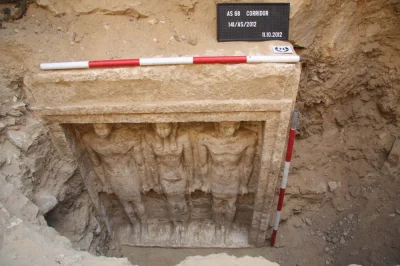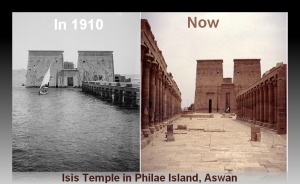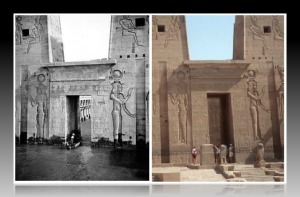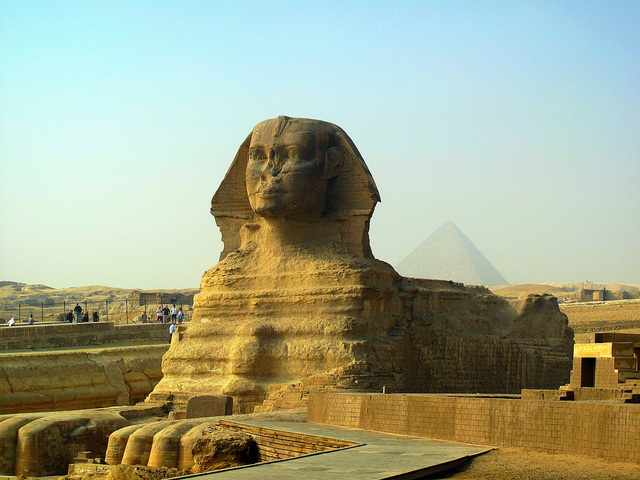 “In Upper Egypt, so many people make their living from tourism, they won’t let anything happen to a tourist. It would be like attacking themselves,” Thomas said. “Most Egyptian people are kind and generous and consider you to be their guest in their country. They feel it’s their duty to make you happy.”
“In Upper Egypt, so many people make their living from tourism, they won’t let anything happen to a tourist. It would be like attacking themselves,” Thomas said. “Most Egyptian people are kind and generous and consider you to be their guest in their country. They feel it’s their duty to make you happy.”
Okay, but this is Cairo — 20 million-plus people squished between the Nile and the Egyptian desert — even if everyone I met here, including those seven folks I’d asked directions of during a solo walk from the Cairo Marriott to the Ramses shopping centre, Tahrir Square and Egyptian Museum were helpful.
If you’re hesitant taking that once in a lifetime trip to Egypt, don’t be. Eight months after the overthrow of former president Hosni Mubarek, life in Egypt — jewel of the Nile and spell-binding North Africa — is pretty much back to normal. There have been two deadly confrontations between protesters and the army since, but both incidents were localized and none involved visitors to the country.
Egypt is quite likely the safest country in the Middle East and Africa. Tourism also is the country’s second-most important industry (next to the Suez canal).
Five million visitors arrived in Egypt in 2010, many lured by the irresistible Red Sea resort towns of Sharm El Sheikh and Hugearta. Others, like myself, came to see the great pyramids of Giza, the temples of Luxor, Valley of the Kings, the Nile, eclectic Aswan, the Sahara desert and so much else this diverse country has to offer. While tourism suffered during the first six months following the revolution, numbers are edging up again slowly.
Egypt is the cradle of civilization — so ancient that centuries before the Greeks invented Zeus, Apollo and Aphrodite, the Pharaohs already had erected gold temples to their gods: Amun (creator), Ra (Sun god) and Isis (goddess of motherhood, magic and fertility).
And, while there are Roman catacombs in Alexandria and Greek ruins in Cairo, the ancient world of the Pharaohs exists only in Egypt.
Here’s what impressed the mos t:
t:
1. EGYPTIAN MUSEUM: If museum-strolling were a sport, a visit to the Egyptian Museum in Cairo would equate withscoring a seat to the World Cup soccer final. Nearly 200,000 visitors flocked to the Art Gallery of Ontario a few years ago to view 100 artifacts belonging to the Egyptian Pharaohs. Imagine, then, the drawing power of this overwhelming collection. Built in 1902, this two-storey, 42-room museum contains 120,000 ancient artifacts, including the mummies of 27 pharaohs, their gold thrones, coffins, jewels, art — you name it — plus the massive King Tut collection. While plans are afoot to relocate the museum near the great pyramids of Giza, the move is not imminent.
2. NILE RIVER CRUISE: About 85 million people live in Egypt, most of them in cities and towns hugging the Nile. It has been this way forever, so a river cruise is easily the best and most relaxing way to see historical Egypt. Just don’t expect five-star amenities. We sailed on the Ra 2, a typical flatboat with 75 cabins, a small deck-top swimming pool, one restaurant (buffet) and three bars, with not much in the way of entertainment. But when you’re sailing down the river of the Pharaohs, Cleopatra, Alexander the Great and Napoleon — nursing an Egyptian Stella (beer) — what’s not to like?
3. VALLEY OF THE KINGS — TOMBS: There were at least 63 Pharaohs buried here, in private, multi-roomed tombs, complete with elaborate story-telling murals and hieroglyphic script dating back to 1,700 BC. While grave-robbers emptied the first 62, Tut’s tomb — buried underneath King Ramses VI — wasn’t discovered until 1922 and remained untouched and over-flowing with priceless gold, jewelry and other antiquities, most of it now on display at the Egyptian Museum.
4. ASWAN, HIGH DAM, PHILAE TEMPLE: Located near the Tropic of Cancer, this city of 300,000 is home to the Aswan Dam, an incredible feat of engineering that re-routed the Nile, but flooded Nubian villages and several historic temples, including Philae. Philae was reconstructed block by block while new homes were purchased for the Nubians, many of whom make their living designing exotic, camel-bone jewelry.
5. KA RNAK AND LUXOR TEMPLES: Karnak Temple is the largest in the world, as each successive Pharaoh felt obliged to add his own rooms. Karnak was featured in the James Bond classic, The Spy Who Loved Me, and is just down the road from the equally bewitching Temple of Luxor.
RNAK AND LUXOR TEMPLES: Karnak Temple is the largest in the world, as each successive Pharaoh felt obliged to add his own rooms. Karnak was featured in the James Bond classic, The Spy Who Loved Me, and is just down the road from the equally bewitching Temple of Luxor.
6. COPTIC CAIRO DISTRICT: Here, on the banks of the Nile, is where the baby Moses was discovered by the Pharaoh’s daughter; and where Joseph, Mary and Jesus hid out for three-and-a-half years. Cairo, itself, is an acquired taste, but enchanting when lit up at night.
7. THE GREAT PYRAMIDS/SPHINX OF GIZA: Amazing! The pyramids and sphinx are Egypt’s most recognizable symbols and can’t be missed.
Reference: Torontosun
Posted by: Memphis Tours Egypt
Memphis Tours Egypt since 1955
![]()














